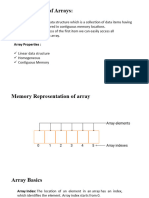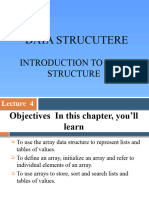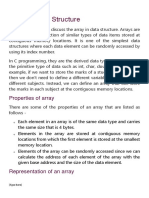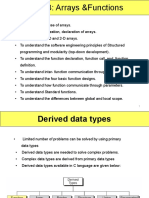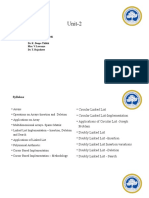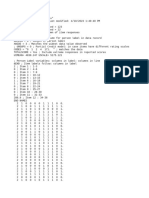0% found this document useful (0 votes)
41 views112 pagesUnit 2 Dsa
The document discusses linear data structures, specifically focusing on arrays and their operations in programming. It covers definitions, memory representation, basic operations such as insertion, deletion, and searching, as well as the concept of Abstract Data Types (ADT) related to arrays. Additionally, it explains multidimensional arrays and their representation in memory, including row-major and column-major formats.
Uploaded by
abhinavsargar1Copyright
© © All Rights Reserved
We take content rights seriously. If you suspect this is your content, claim it here.
Available Formats
Download as PDF, TXT or read online on Scribd
0% found this document useful (0 votes)
41 views112 pagesUnit 2 Dsa
The document discusses linear data structures, specifically focusing on arrays and their operations in programming. It covers definitions, memory representation, basic operations such as insertion, deletion, and searching, as well as the concept of Abstract Data Types (ADT) related to arrays. Additionally, it explains multidimensional arrays and their representation in memory, including row-major and column-major formats.
Uploaded by
abhinavsargar1Copyright
© © All Rights Reserved
We take content rights seriously. If you suspect this is your content, claim it here.
Available Formats
Download as PDF, TXT or read online on Scribd
/ 112










